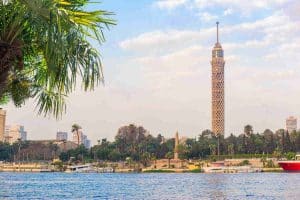When we speak of Ancient Egypt, death always occupies a prominent place: much of the efforts of that society were to ensure eternal life in the Hereafter. And the best examples of this can be found in the tombs of the pharaohs and other important members of the Court: pyramids, necropolises, sarcophagi… But a look at the daily life in Ancient Egypt shows us that it was a surprisingly modern society, if we look at it with the eyes of our time.
To realize this, there’s nothing better than traveling to Deir el-Medina, located very close to the Valley of the Kings, in Luxor. The archaeological works that have been carried out at this site provide us with valuable and very curious information about what everyday life was like in Ancient Egypt. And here we bring you some examples of this.
What is Deir el-Medina
Deir el-Medina is an archaeological site located on the western bank of Luxor, which in the times of Ancient Egypt was Thebes, the capital during the New Kingdom and other historical periods. But it is not just any archaeological site, but probably the best to understand what life was like in Ancient Egypt.
Here was a town or city where artisans and other professionals who worked on the tombs of the Valley of the Kings, the Valley of the Queens, and other nobles’ necropolises lived. In other words, the ‘common people’, with their families, their concerns, their problems, and their entertainments.
The different excavation and analysis works that have been carried out in recent decades have allowed us to find documents that clearly illustrate what life was like in Ancient Egypt, in areas as different as justice, medicine, or gastronomy.
Documented curiosities about life in Ancient Egypt
Some of the most illustrative documents from Deir el-Medina are scattered throughout different Egyptian museums around the world, such as the one in Turin (Italy), but stopping here during your trip to Luxor will allow you to evoke curiosities such as the ones we will tell you about below.
- The first documented strike in history: this is attested by the so-called Strike Papyrus, from the time of Ramses III’s reign, in which a scribe narrates the revolt of the workers of Deir el-Medina against the non-payment of their wages. This shows, among other things, the group consciousness and the organizational capacity of the working class in Ancient Egypt.
- Taste for eroticism: many ostraca (ceramic pieces on which sketches or tests were drawn) have a clearly erotic component, with the female figure as the protagonist. And in other cases, they are really explicit sexual scenes, something that may be shocking to those who believe that the art of that society only represented scenes of gods and pharaohs.
- A very refined satire: also in ostraca and papyri found in Deir el-Medina, we can realize that the artists of Ancient Egypt knew how to exploit satire and irony. In some cases, resorting to the aforementioned eroticism of the images, which is used to criticize some vices of society. In others, denigrating some professions to enhance the values of others, as in the so-called Satire of the Professions papyrus (British Museum).
- A very beer-loving people: another curiosity about life in Ancient Egypt is the abundant consumption of beer that characterized its members. According to some diaries found in Deir el-Medina, beer production was weekly and in some cases permits were granted for it. On the other hand, other absences from work were due precisely to its excess consumption, due to indispositions or hangovers.
These are just some of the curiosities of life in Ancient Egypt that the Deir el-Medina site has documented. If you want to make an on-site visit to this place, do not hesitate to request it within your Luxor travel package.






